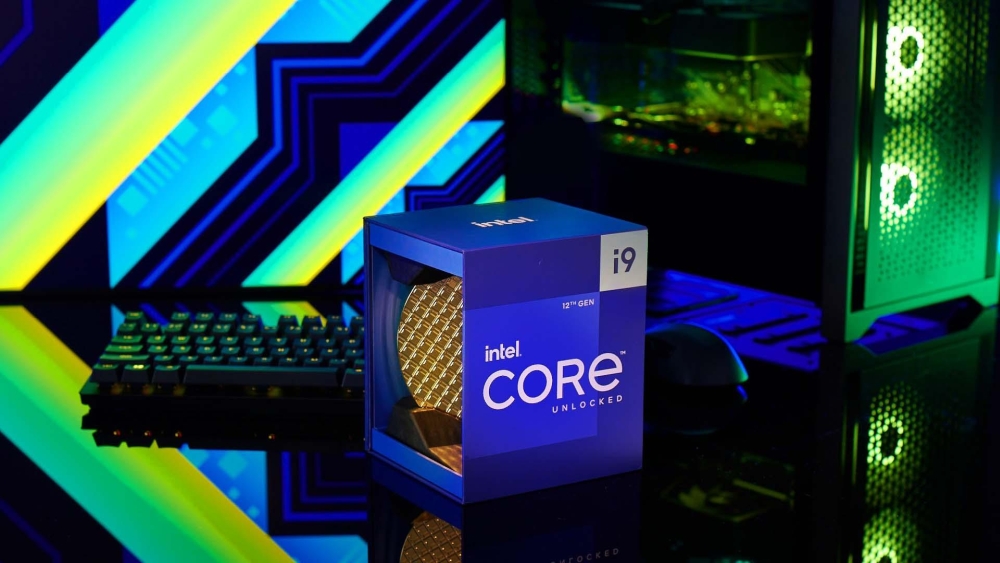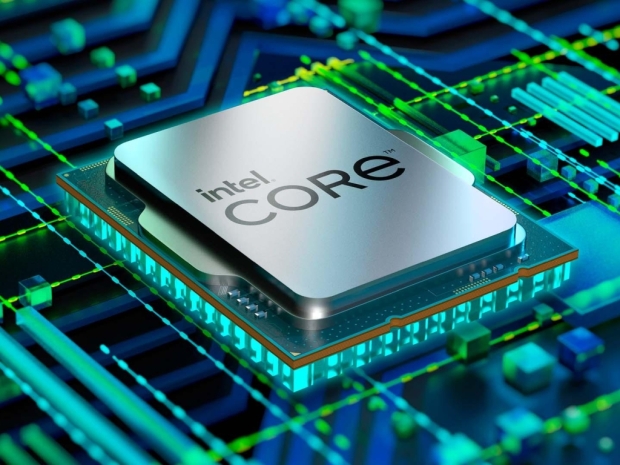Intel has been providing some information regarding its 12th gen Core Alder Lake CPUs for quite some time now and while we had a general idea about the new hybrid design, it was left to leaks to provide details, but now, all information is official and will be coming as a part of Intel's InnovatiON virtual event, which aims to pick up on the revered Intel Developer Forum (IDF) event which was last held in 2016.
Hybrid core configuration with Performance and Efficient cores
As you probably already know, Intel's 12th gen Core Alder Lake CPUs are based on a so-called Hybrid core architecture, featuring Performance- and Efficient-cores, all on the same processor die. The 10th gen Core Alder Lake is built on the Intel 7 manufacturing process, which is pretty much a renamed 10nm Enhanced SuperFin manufacturing process.
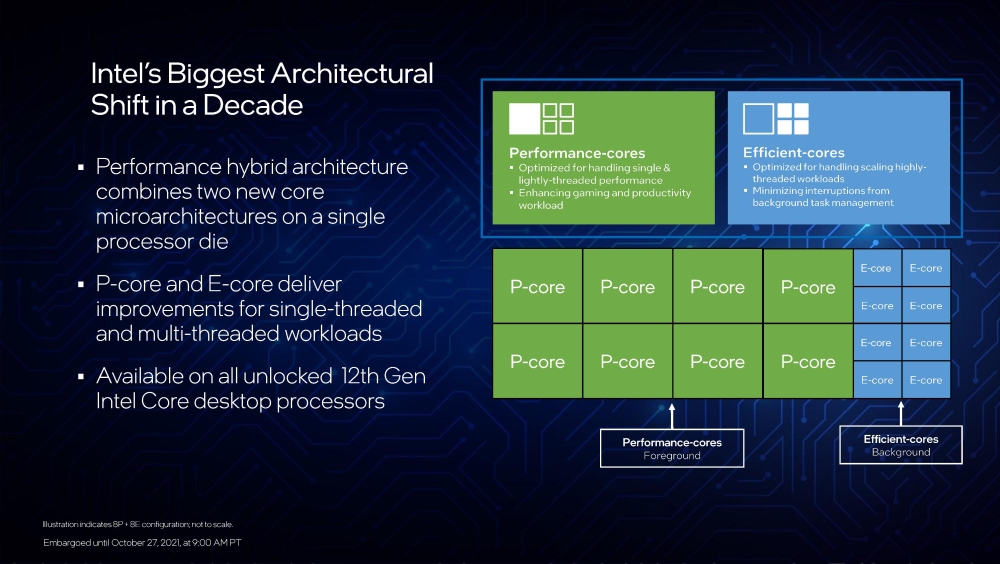
The Performance-cores (P-cores) are based on Intel's latest Golden Cove architecture, while the Efficient-cores (E-cores) are based on Gracemont architecture. With this in mind, we are looking for a total of eight Performance (P-cores) and eight Efficient (E-cores) on the top SKU, the Core i9-12900K.
This is where things get a bit complicated for those that did not closely follow Intel's Alder Lake architecture, the top SKU gets eight P-cores and two quad-core clusters of E-cores, which might sound like a 16-core CPU, but due to differences in architecture, configuration, and cache, it would be fairer to describe the Core i9-12900K as the 8+8-core CPU.
The hybrid design will bring a lot of problems for an average buyer, as while the Core i9-12900K/KF can be described as the 16-core CPU, it is far from it, as problems start when you talk about hyper-threading and/or cache.
Since P-cores support hyper-threading and E-cores do not, you get a 16-core CPU with 24-threads (or precisely, 16+8-threads), at least when it comes to Core i9-12900K/KF.
It gets even worse when you look at L1, L2, and L3 cache. Intel compares a P-core with a quad-core cluster of E-cores. Each P-core has 1.25MB of L2 cache and each quad-core E-core cluster shares 2MB of L2 cache. There is also 30MB of shared L3 cache and different SKUs, depending on the P- and E-core configuration will have slightly different number of threads and amount of cache.
For example, the Core i7-12700K, which is an 8+4-core SKU, has 20-threads (16+4), and 12MB of L2 cache (despite the fact that it loses only 2MB of shared L2 E-core cache) and 25MB of shared L3 cache, as it only lacks a single quad-core E-core cluster.
In terms of performance, Intel claims that Golden Cove Performance-cores provide 28 percent IPC gain over Skylake, which should be enough for it to come up on top of AMD's Zen 3 architecture, core-to-core. With Gracemont Efficient-cores, which offer about the same performance as Intel's 14nm 10th gen Comet Lake Skylake CPU cores but at a fraction of power, you get a design that could provide the best of both worlds.

Of course, we'll wait for November 4th to see some of the first reviews and if these benefits will translate to real-world usage, as so far, Intel provided benchmarks do not give a clear picture, especially since there are still a lot of unknowns when it comes to Intel's Thread Director, a special scheduler built directly into the core and working with the OS to switch loads between different cores.
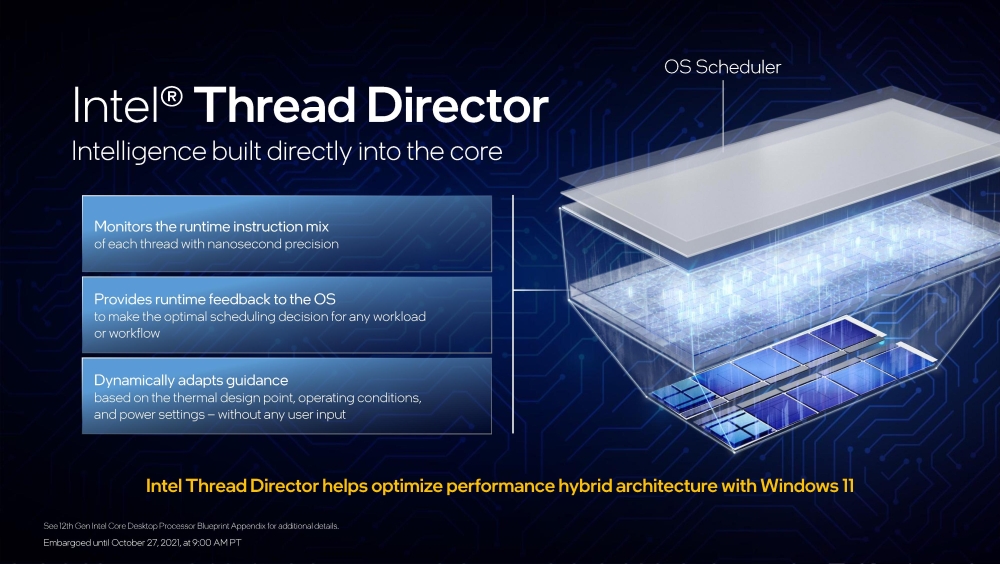
Six SKUs, with Core i9-12900K/KF leading the way
As mentioned, Intel is launching a total of six 12th gen Core Alder Lake SKUs on November 4th, including the Core i9-12900K, Core i9-12900KF, Core i7-12700K, Core i7-12700KF, Core i5-12600K, and the Core i5-12600KF. As expected, the K-parts come with Intel integrated UHD 770 graphics while the KF parts lack that feature.
The entire lineup features a total of 20 CPU PCIe lanes, supports up to 128GB of DDR5-4800 or DDR4-3200 memory in dual-channel memory configuration, and lacks Intel Thermal Velocity Boost or the support for AVX512 instructions. We also get new TDP values, described as "Processor Base Power" and "Maximum Turbo Power".
The Core i9-12900K/KF is the 8+8-core SKU with 24 threads (16+8), 14MB of total L2 cache, 30MB of L3 cache, and works at Turbo Boost Max frequency of up to 5.2GHz, with P-cores working at 3.2GHz base and 5.1GHz Max Turbo clocks, while E-cores work at 2.4GHz base and up to 3.9GHz Max Turbo frequency. The base power for the Core i9-12900K/KF is set at 125W with maximum turbo power peaking at 241W.
The Core i9-12900K comes with Intel's UHD Graphics 770 IGP (Xe LP), which is the same one we have seen on Rocket Lake-S CPUs and packs 32 Xe EUs.
The Core i7-12700K/KF is an 8+4-core SKU with 20 threads (16+4), has 12MB of L2 cache and 25MB of L3 cache. The Turbo Boost Max frequency is set at up to 5.0GHz. The P-cores work at 3.6GHz base and 4.9GHz Max Turbo clocks while P-cores work at 2.7GHz base and 3.8GHz Max Turbo frequency. The base power is set at 125W with maximum turbo power peaking at 190W.
The Core i7-12900K also comes with Intel UHD Graphics 770 IGP.
The Core i5-12600K/KF is a 6+4-core SKU with 16 threads (12+4), has 9.5MB of L2 cache and 20MB of shared L3 cache. The Core i5-12600K/KF lacks the Turbo Boost Max frequency and its P-cores work at 3.7GHz base and 4.9GHz Max Turbo, while the single quad-core E-core cluster works at 2.8GHz base and 3.6GHz Max Turbo frequency.
The base power is set at 125W with maximum turbo power peaking at 150W.
The Core i5-12600K also comes with Intel UHD Graphics 770 IGP.
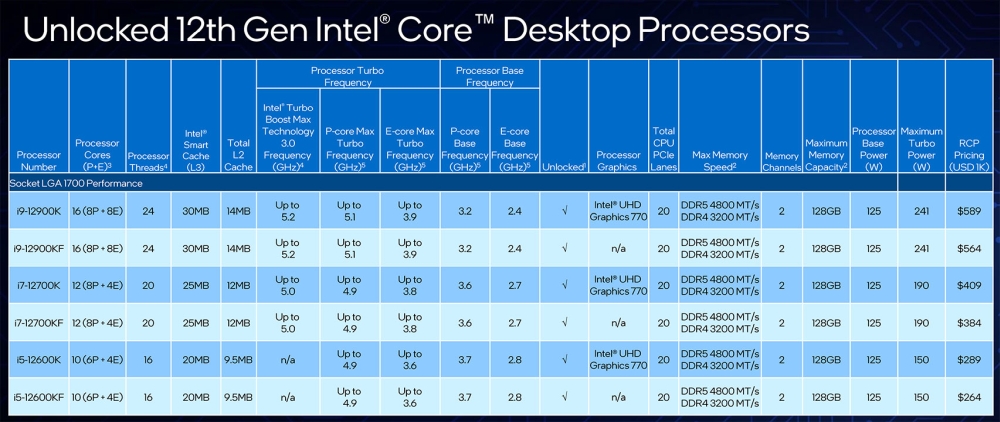
Intel Z690 chipset joins Alder Lake
Following the launch of 12th gen Core Alder Lake CPUs, Intel is also launching its new 600 series Z690 chipset, which will support both DDR4 and DDR5 memory.
The Z690 chipset talks to the CPU via DMI Gen 4 8-lane bus, and the chipset will offer PCIe Gen 4 and Gen 3 interface, with up to 12 PCIe Gen 4 and up to 16 PCIe Gen 3 downstream lanes.
The rest of the features include Intel Optane Memory with Solid State Storage support, integrated Intel WiFi 6E, two wired Ethernets with 1GbE and 2.5GbE, eight SATA 6Gbps ports, up to four 20Gbps USB 3.2x2 ports, up to ten 10Gbps USB 3.2x1, up to ten 5Gbps USB 3.1x1 ports, up to fourteen USB 2.0 ports, and more.
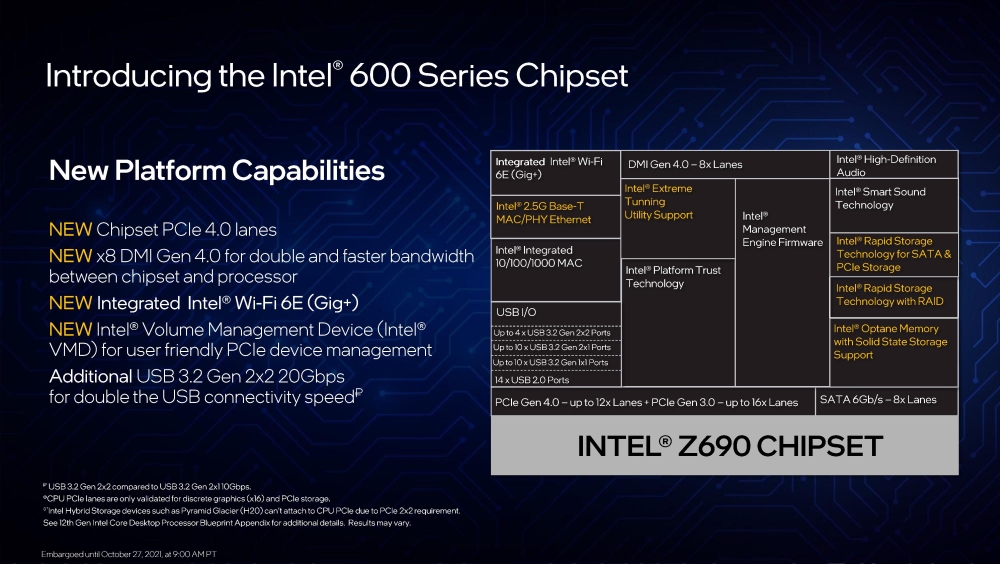
While we wait for reviews
Intel also talked about overclocking and it appears it has put a lot of effort into it, even going as far as improving thermals through package optimization, as, after all, these K/KF-series CPUs are "unlocked SKUs". The hybrid design of the CPU adds a lot of complexity to overclocking as it is possible to overclock both P- and E-cores, separately, so there are a lot of things to talk about, including different base-clock multipliers, and more. Of course, we'll see how complex and how good it works when reviews start to trickle in.
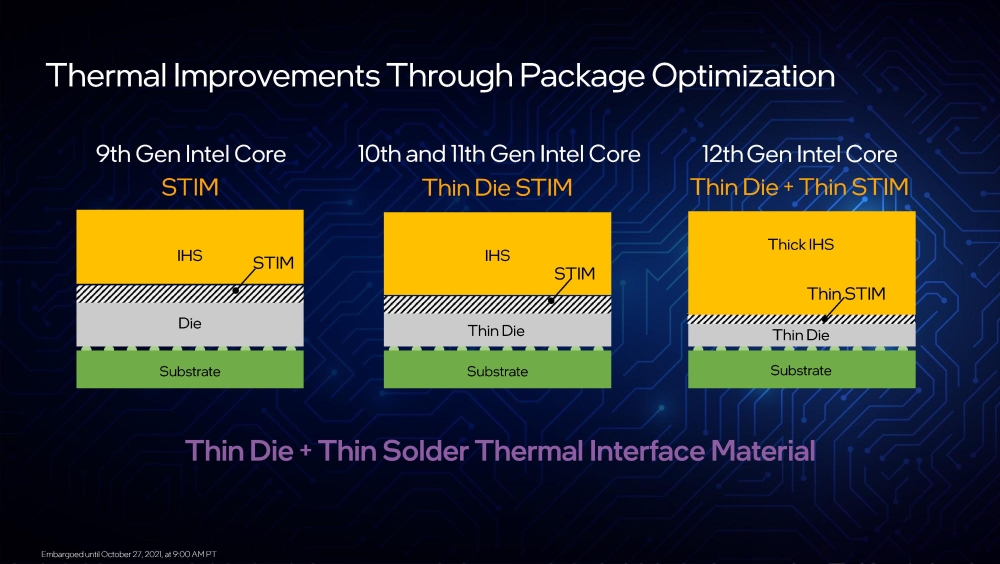
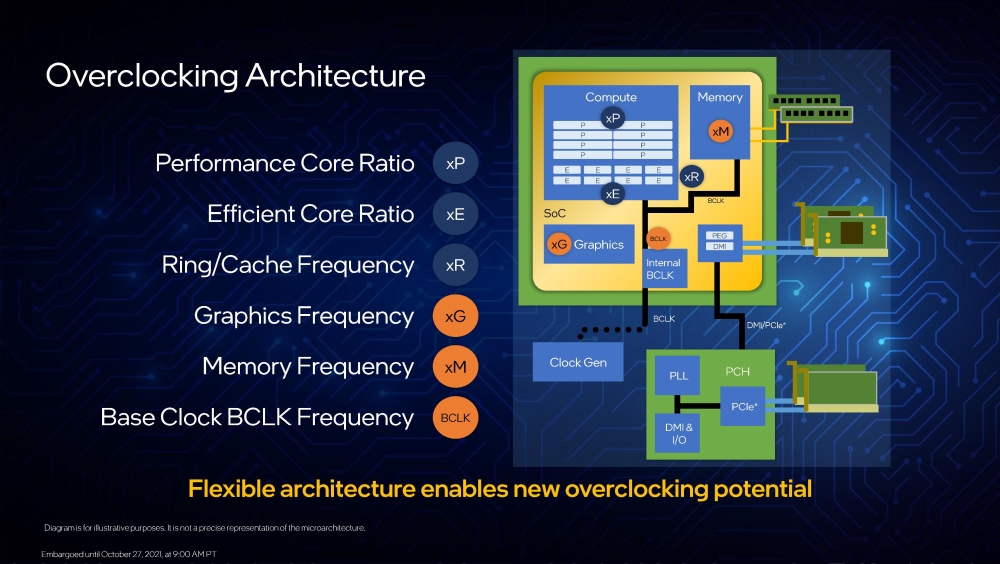
Intel's first 12th gen Core Alder Lake SKUs will launch on November 4th and while we do not have precise pricing, other than 1000-unit tray pricing, set at USD $589 for the Core i9-12900K, $564 for the Core i9-12900KF, $409 for the Core i7-12700K, $384 for the Core i7-12700KF, $289 for the Core i5-12600K, and $264 for the Core i5-12600KF, it is left to be seen if actual retail prices will follow suit.
Neither of these six SKUs will be coming with a stock/boxed configuration so there won't be an Intel reference cooler, but, luckily, most CPU cooler manufacturers will offer a free mounting replacement for the new LGA1700 socket, and some motherboard makers are including mounting holes for the older socket as well, so current coolers should work as well.
In any case, it is left to be seen if Intel can shake AMD and its Ryzen CPUs and performance-wise, these are close and it will come down to price, performance-per-Watt, platform improvements, and other factors, so it will be hard to draw the bottom line when those reviews come.
